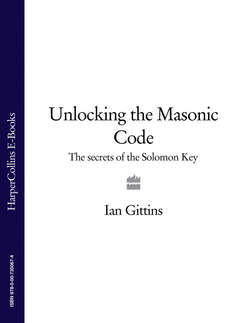Читать книгу Unlocking the Masonic Code: The Secrets of the Solomon Key - Ian Gittins - Страница 9
Men Only
ОглавлениеLike the Great Room at Lord’s, Freemasonry remains a last bastion of male chauvinism. Masonry was a maleonly province until 1877, when maverick French Grand Lodge the Grand Orient de France horrified traditionalist Masons by admitting female members. This led to the French body being ostracized by most of the movement, and today both English and US Masonry’s controlling bodies refuse to admit women. Yet there are a few female lodges in England that are grudgingly semi-recognized by the United Grand Lodge of England (UGLE), who in 1999 confirmed ‘Freemasonry is not confined to men’ before hastily adding, ‘This Grand Lodge itself does not admit women’.
Particularly zealous Freemasons can collect further honours by taking the additional degrees of the York Rite and Scottish Rite—the latter discipline allows them to pursue no fewer than thirty-two levels of Masonic education and enlightenment. However, these ‘appendant’ degrees are optional, and theoretically even a 32nd degree Scottish Rite Mason is in no way superior to a common-or-garden Master Mason.
The names of the three main degrees awarded to Freemasons, and the phraseology used within the ceremonies, take their cue from the language used by the working stonemasons of the Middle Ages. These hugely gifted craftsmen made use of geometry and supreme architectural skills to build the soaring Gothic cathedrals whose very existence supposedly proved the glory of God. Their structures were viewed as a divine perfection on Earth.
As we shall see later in this book, Freemason philosophy likens the soul of every Mason to such an edifice. It is the task of the Freemason to improve himself morally and spiritually, through rite, ritual and a fundamental understanding of the world around him, until he aspires to a state of human perfection. Yet this perfection is viewed as the work of a Supreme Being—which is why atheists are not allowed to become Masons.
Wild-eyed anti-Masonic jihadists (and Dan Brown) may speculate about Freemasonry as a demonic, sinister cabal, but most modern objections to the movement are more workaday and prosaic. Outsiders have long considered the Freemasons to be an old boys’ club whose members will invariably do each other favours outside of the lodge. This view has been supported by various scandals over the years, including a damaging late 1970s court case in which senior London High Court judges, police chiefs and pornographers were implicated. It may not be the Knights Templar, but such corruption does the fraternity’s public relations image few favours.
Masonry’s riposte to this charge is that such nepotism is forbidden by statute. Freemasons are barred under the movement’s laws, or ‘Charges’, from using their membership to promote their own interests, or from extending cronyism to fellow lodge members. Theoretically, such lapses are punishable by expulsion from the fraternity, although it is reasonable to suspect that the handful of cases that have been discovered over the years represent the tip of the iceberg.
Nor are Freemasons particularly secretive nowadays. Beyond the signs, grips and precise ceremonies, the organization is largely an open book. Anybody wishing to approach their local Grand Lodge to discuss becoming a Mason will find their number in the telephone directory. In America, where they have always done things rather differently, lodges have even run billboard campaigns to attempt to boost their membership.
So with global Freemasonry in decline and its social significance and power arguably at it lowest point in centuries, what makes Dan Brown think the Craft is a fitting setting for the latest convoluted and faintly preposterous adventures of Robert Langdon? To answer that question, let’s examine the two parallel histories of Freemasonry—the real one, and the fanciful version that has over the years fuelled the imaginative fantasies of so many conspiracy theorists and exploitative opportunists.
